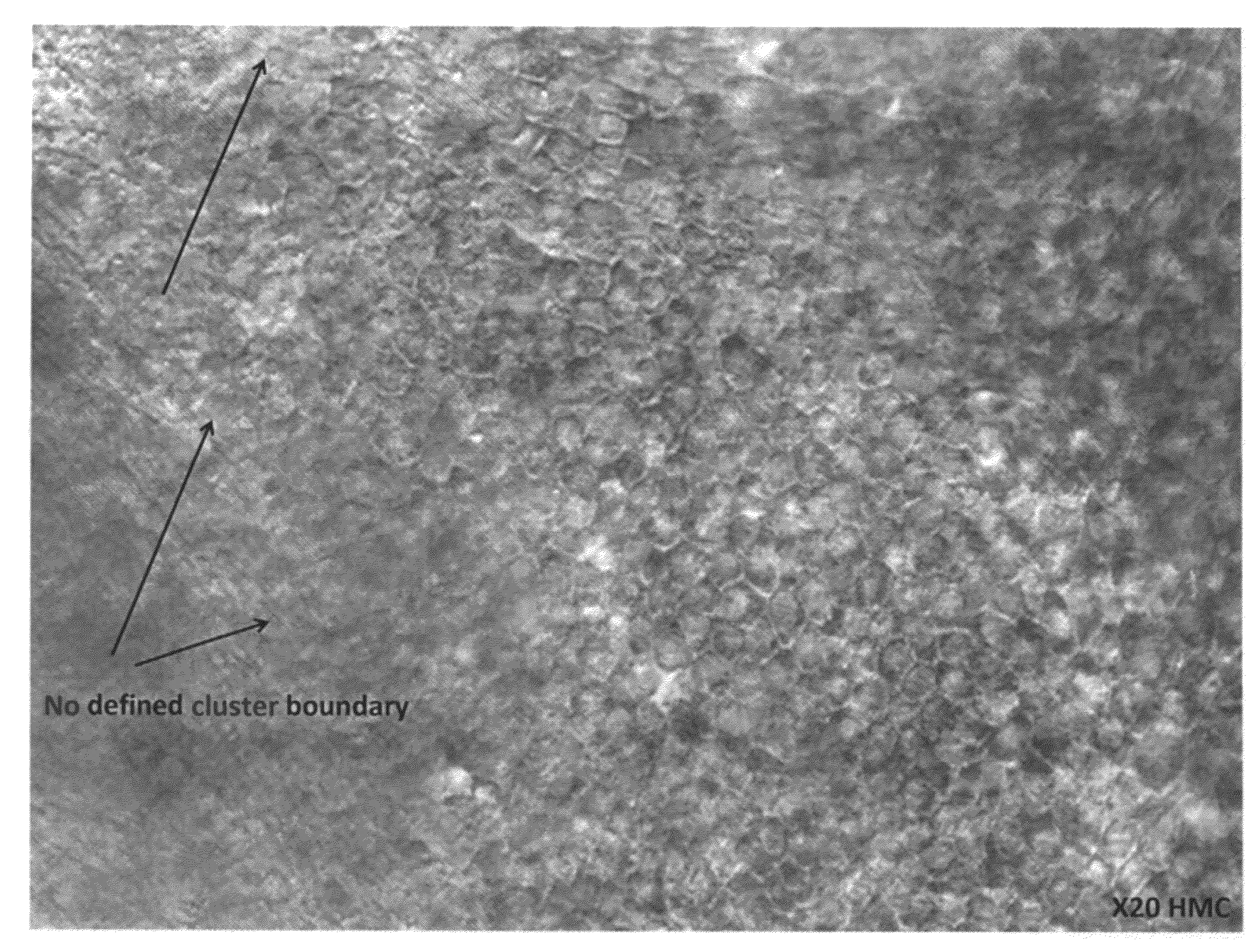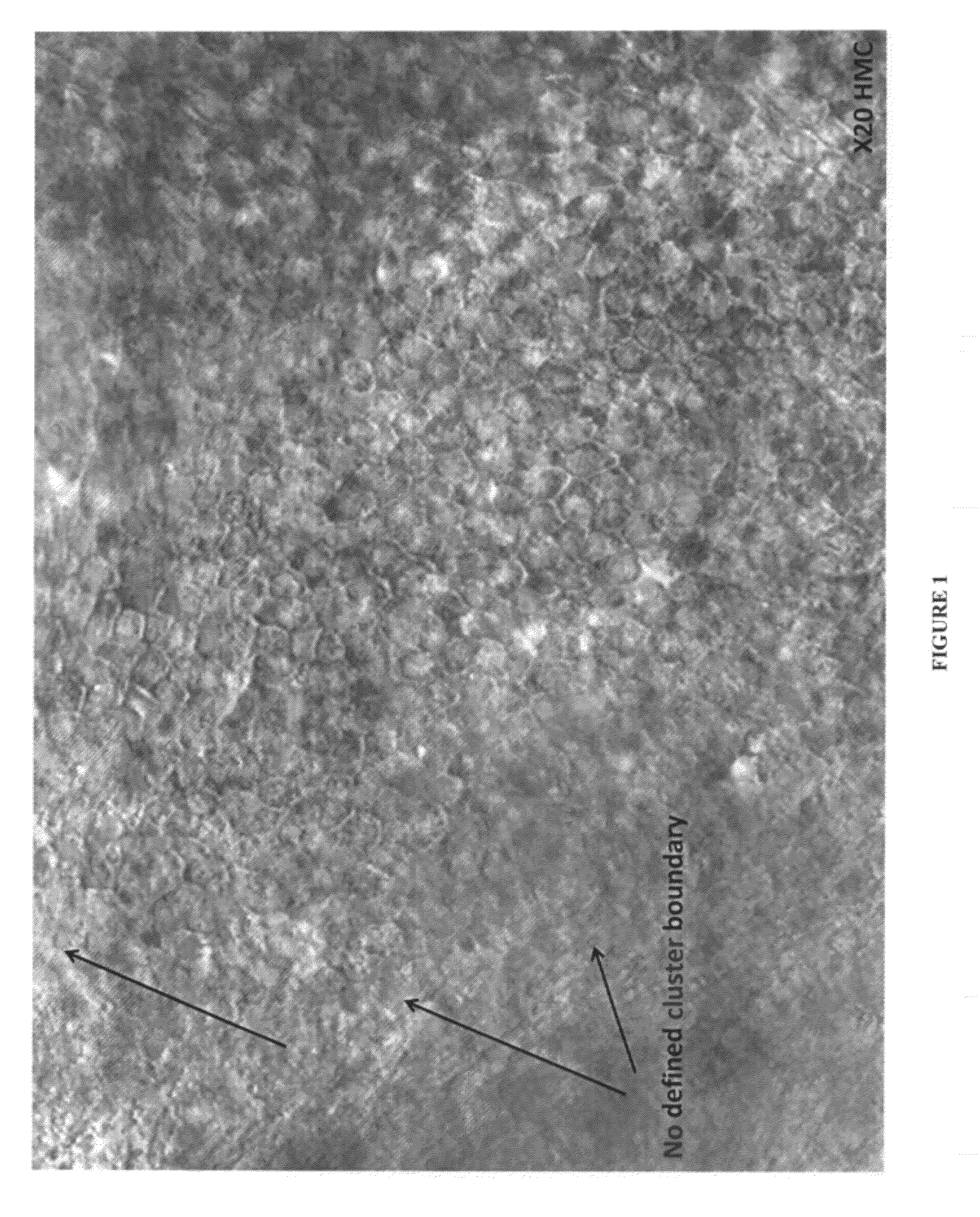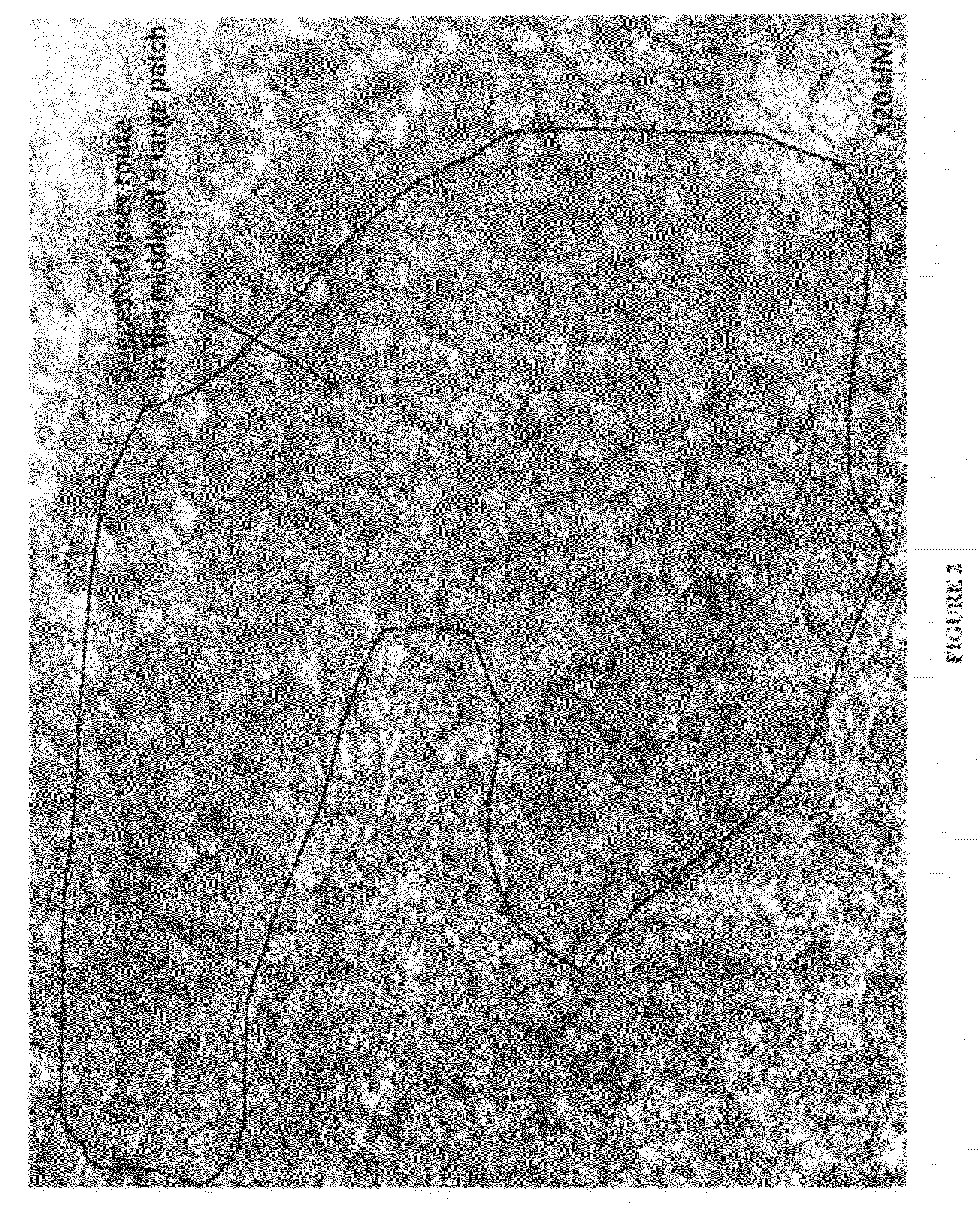Laser isolation of viable cells
a technology of viable cells and lasers, applied in cell dissociation methods, instruments, enzymology, etc., can solve the problems of inability to obtain eye donors
- Summary
- Abstract
- Description
- Claims
- Application Information
AI Technical Summary
Benefits of technology
Problems solved by technology
Method used
Image
Examples
example 1
Protocol for Laser Microdissection of Living In Vitro Cells
Introduction
[0142]Laser capture microdissection (LCM) is a proven technique for the isolation of pure cell populations for downstream molecular analysis. The combined use of UV laser cutting with LCM using an infrared (IR) laser permits rapid and precise isolation of larger numbers of cells while maintaining cellular and nucleic acid integrity necessary for downstream analysis. In this application note, it is shown that these established techniques can also be used for the isolation of living cells, avoiding other more laborious methods of cell selection and enabling a wide range of research applications. This example describes a protocol for the isolation of living adherent cells and the subsequent recultivation of homogeneous subpopulations.
Methods
[0143]PEN membrane slide may be hourly rinsed with 100% ethanol and air-dry prior to use and keep in a sterile environment (e.g., slide should be completely d...
example 2
ES Cell Differentiation to Produce RPE Cells
[0153]Human RPE cells were produced by differentiation of human ES cells essentially as described in U.S. Pat. No. 7,795,025. In brief, hES cell cultures were maintained and expanded on mouse embryo fibroblast (MEF) feeder cells, then trypsinized and cultured on low adherent plates (Costar) until embryoid bodies formed. The embryoid bodies were cultured until regions containing pigmented cells having epithelial morphology were formed therein. The embryoid bodies were then digested with enzymes (trypsin, and / or collagenase, and / or dispase), and pigmented cells were selectively picked, plated, and cultured. After about two weeks in culture at low density, the cultured cells lost their pigmentation, but after another two to three weeks in culture regions of pigmented cells having a cobblestone, epithelial-like morphology again appeared. This pigmentation behavior—temporary loss from cells in proliferating cultures, and restoration in quiescen...
example 3
Isolation of Viable RPE Cells Using Laser Microdissection
[0154]Culture containing RPE cells differentiated from human ES cells were produced as described in the preceding example. Laser microdissection was then used to isolate islands of pigmented epithelial cells for further culture. ES-derived RPE cells were grown in multiwell culture plates and maintained as quiescent cultures until pigmented epithelial islands were perceptible (e.g., at least about 7 days). The multiwell plate was then placed on a microscope fitted with the STILETTO® laser system (Hamilton Thorne Ltd., Beverly, Mass.) Islands of pigmented epithelial cells were then visualized, and the provided control software was used to manually draw a target zone circumscribing and immediately outside of each pigmented island. Cells in the target zone were then ablated by laser pulses which were caused to strike the target zone by computer-controlled movement of the microscope stage. After ablation of the target zone, each is...
PUM
| Property | Measurement | Unit |
|---|---|---|
| distance | aaaaa | aaaaa |
| distance | aaaaa | aaaaa |
| distance | aaaaa | aaaaa |
Abstract
Description
Claims
Application Information
 Login to View More
Login to View More - R&D
- Intellectual Property
- Life Sciences
- Materials
- Tech Scout
- Unparalleled Data Quality
- Higher Quality Content
- 60% Fewer Hallucinations
Browse by: Latest US Patents, China's latest patents, Technical Efficacy Thesaurus, Application Domain, Technology Topic, Popular Technical Reports.
© 2025 PatSnap. All rights reserved.Legal|Privacy policy|Modern Slavery Act Transparency Statement|Sitemap|About US| Contact US: help@patsnap.com



